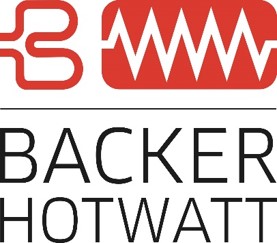Pick the Best Heater for Your Semiconductor Application
In recent years, the semiconductor industry has faced numerous challenges, from supply chain disruptions to increased global competition. The introduction of the CHIPS Act (Creating Helpful Incentives to Produce Semiconductors) in 2022 is reenergizing domestic semiconductor manufacturing.
The CHIPS Act provides $52 billion in subsidies for semiconductor research, design, and manufacturing. Its primary goals are to boost domestic production, enhance research and development, and strengthen the nation’s supply chain resilience.![]()
Since passage, the CHIPS Act has spurred major economic activity, including:
- 83 new semiconductor ecosystem projects announced across the U.S., including the construction and expansion of semiconductor manufacturing facilities (fabs), and facilities that supply the materials and equipment used in chip manufacturing.
- $447 billion in private investments announced across 25 states to increase domestic manufacturing capacity.
- 56,000 new high-quality direct jobs announced in the semiconductor ecosystem as part of the new projects, which will support hundreds of thousands of additional jobs throughout the broader U.S. economy.[i]
The CHIPS Act has also catalyzed collaborations between industry and academia, leading to groundbreaking research in semiconductor technologies. These partnerships aim to address critical challenges, such as miniaturization, power efficiency, and performance enhancement, ensuring the U.S. remains at the forefront of semiconductor innovation.
The Role of Heating Elements in Semiconductor Manufacturing
As the semiconductor industry evolves, the demand for precision and efficiency in manufacturing processes has never been higher. A key component to ensuring the success of electronics and semiconductor OEMs’ applications is the type of heating element used. Heaters provide precise and localized heating in various semiconductor manufacturing processes. With the trend towards increasingly miniaturized heaters, micro heaters offer significant advantages, including:
- High Precision: Can achieve extremely accurate temperature control, which is crucial for processes that require consistent and uniform heating.
- Rapid Response: Can quickly reach the desired temperature, reducing process times and increasing efficiency.
- Energy Efficiency: Due to their small size and localized heating capabilities, micro heaters consume less energy compared to traditional heating methods.
The best heater for your semiconductor application may be a standard or custom heater. Backer Hotwatt offers a comprehensive product line for OEMs in the electronics and semiconductor markets, including:![]()
- Test sockets/test ovens
- Controlled environments/gas management systems
- Vacuum systems
- Gas and fluid chillers
- Reactivation air/desiccant dehumidification
Leading the Semiconductor Market Surge
The CHIPS Act has set the stage for a renaissance in the U.S. semiconductor industry, driving investments, innovation, and collaboration. As the industry strives for greater efficiency and precision, the role of heaters has become increasingly significant. These powerful devices are essential for achieving the high standards required in advanced semiconductor manufacturing.
Backer Hotwatt collaborates with leading semiconductor and electronics assembly companies around the world. Our team works hand-in-hand with your team to meet all performance, physical, and regulatory requirements to ensure a successful product launch and commercialization.
Test Sockets and Test Ovens
Testing plays an important role in enabling engineers to gauge the design, material, functional efficiency, and life-of-product time span for semiconductors. Test sockets are used for connecting electronic components to test equipment for functional testing, while test ovens are used for subjecting electronic components to various environmental conditions for reliability and performance testing. Both play essential roles in the testing and validation of electronic components but serve distinct purposes in the testing process. Burn-in testing requires exacting parameters along with precise and dependable temperature control. Protocols, components, and systems differ vastly, and heating elements need to be uniquely designed and produced to allow for unique products and testing protocols.
Backer Hotwatt is the leading provider of micro-sized cartridge heaters for test sockets. Made in the USA, our Superwatt and SunRod cartridge heaters work exceptionally well for test socket applications and provide durable, dependable performance.
This downloadable eBook provides in-depth information about our SunRod cartridge heaters.
To learn more about our standard and custom solutions—including test sockets and test ovens; vacuum systems; gas and fluid chillers; and reactivation air/desiccant dehumidification—visit our heaters for semiconductors page.
Connect with Us
Backer Hotwatt solves challenging problems with unique heating solutions that our competitors won’t—or can’t—provide. When it comes to controlling the environment of your semiconductor application, heat and temperature are crucial. Selecting the right heating element enables you to hit precise heating targets, achieve tight tolerances, and enhance performance.
Partnering with Backer Hotwatt will help to ensure U.S. semiconductor manufacturers lead the market in innovation and supply chain resiliency. Begin the conversation with one of our engineers to help decide what type of heater will best suit your application.
[i] https://www.semiconductors.org/the-chips-act-has-already-sparked-200-billion-in-private-investments-for-u-s-semiconductor-production/
